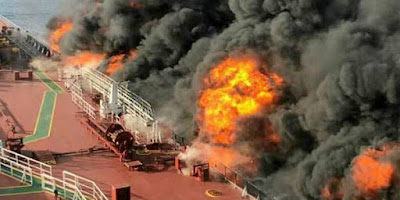 |
| Elam/Iran Susa/Anshan |
27 June 2019: Elam and Iran (Paras), from the biblical prophetic perspective, are they the same or different? There are, according to the conducted Eschatology Today research, as many differing opinions or interpretations of this question as there are maps or drawings which depict the territory of ancient Elam within what we know today as the Islamic Republic of Iran (Paras). What appears as a fact is that ancient Elam does not exist today, but within its ancient territory are several provinces of the present Islamic Republic of Iran. Perhaps that is all we need to know about the subject. But maybe there is more. This discussion of the "more" will be brief but detailed overview of the Biblical and historical perspectives.
The Biblical Perspective
Jeremiah, Ezekiel and Daniel all referenced this land within the prophecies given them directly by the LORD God, or in the case of Daniel, by His angelic messenger Gabriel. One question that arises is why Jeremiah's prophecy (Jer. 49:34-39) only refers to Elam, and Ezekiel's prophecy (Ez. 38:5) only refers to Iran (Paras). Not many venture futher to acknowledge that Ezekiel also referred to Elam during the time of his prophetic ministry.
Ezekiel 27:10 refers to Paras (Iran). Then in Ezekiel 32:24 the prophet speaks lamentations upon the nations that will go down into the pit having been conquered by the sword (war). Among them is Eylam (Elam), gone into the pit,; conquered for having caused "their terror in the land of the living." With Elam in the pit is also Asshur (Assyria), Meshech, Tubal, Edom, Sidon and Egypt). So here are two example of Ezekiel using both terms for modern Iran in the same general time period (circa 580 BC).
The Historical Perspective
In those ancient times Elam had been an established political state for a couple of millennia in the general region of Iran we know today as the province of Khuzestan when Jeremiah and Ezekiel received their prophecies. Back then Elam was a contemporary of Akkadia and Sumeria. Elam emerged from that domination circa 1300 BC, and over hundreds of years there emerged within Elam two regional powers, Susa, with which we're eminently familiar from the Old Testament, and Anshan. In those ancient days the kings of Elam were known as "the king of Elam and Anshan.
Then, circa Nebuchadnezzar the First (Nebuchadnezzar I) reign, about one-hundred some-odd years prior to King David's rule in Israel, the western half of Elam came under the control of the Babylonian Empire, while in the east, in Anshan, the Achaemenids began establishing what would come to be known as the Achaemenid Persian Empire. Before taking on Babylon, as the Bible recounts for us, successive kings of Anshan (Achaemenes, Teispes, Cyrus I, Cambyses and finally Cyrus II (Cyrus the Great 559 BC) took all nations and empires east of the Tigris River, until the sack of Babylon, as we know from Scripture. The languages of this second of the great world empires after Babylon was Persian, Elamite, Akkadian and Aramaic as the official language of government.
The point here is that from a bible-based eschatological perspective, Elam and Persia are virtually synonymous. This is why Ezekiel used both names. And this is how Eschatology Today interprets Jeremiah 49:34-39 and Ezekiel 38:5 as referring directly to the modern-day Islamic Republic of Iran. In the days of Jeremiah and Ezekiel both Elam and Anshan (proto-Persia) were located within the same geographic region of southwestern Iran.














